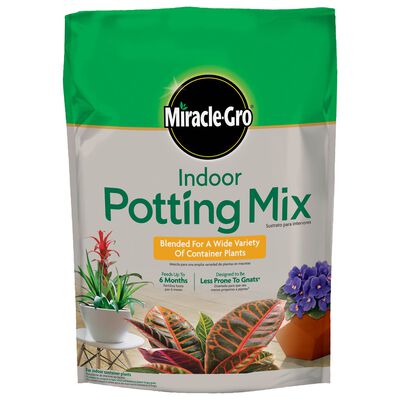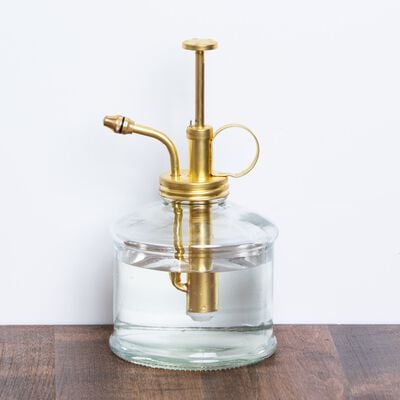Aside from the sound of crashing waves, nothing transports us to a beach—umbrella drink in hand—better than a palm tree. And bringing that tropical, laid-back vibe indoors couldn’t be easier than placing a potted parlor palm in a corner on the floor.
Parlor palms (Chamaedorea elegans) aren’t needy roommates, either. They like what we like—warm temps, medium lighting, and a drink now and then (bonus: They don’t leave their socks on the floor).
How To Keep a Parlor Palm Happy
These small, slow-growing shrubby plants will dress up your room without hogging up too much space. They prefer moderate humidity but can get by with less, and they don’t need a lot of light or water.
How Much Light Does a Parlor Palm Plant Need? | Lighting
Parlor palms like average lighting. They even do fine in basement apartments because ordinary fluorescent household lights—as long as they’re kept on for most of the day—provide all they need.
Bright, indirect sunlight is ideal, though, so if you’re placing your plant near a window, set it off to the side. North- and east-facing windows are best for parlor palms, but it’s OK if yours faces south or west — which lets in the strong afternoon sun. Just set the plant two or three feet away or cover the window with a sheer curtain to protect it from sunscald.
How Do I Know When To Water My Parlor Palm Plant? | Watering
Give your parlor palm a drink when the soil feels dry about an inch deep in the pot—stick your finger in there to be sure. Depending on the humidity in the room, you’ll need to water your plant about once every week or two—and less over winter. Pour the water slowly to let the soil absorb it, then dump out any excess that accumulates in the saucer or drip tray.
How Do I Use Plant Food For My Parlor Palm Plant? | Plant Food
Plant food is an important part of fostering healthy growth and new leaves as your plant settles into its new digs. Be sure to follow the directions on the package based on the size of your plant and time of year. In fall and winter your plant will grow more slowly, so you don’t need to feed it as often. Yes, even though your plant lives inside, it still experiences the seasons.
What Is The Ideal Environment For My Parlor Palm Plant? | Environment
Parlor palms like ordinary household conditions, which is how they got their name back in Victorian times. Today, we’d call them “living room palms,” but who are we to question tradition?
They do best in average to above-average humidity but—unlike most palms—can get by with a bit less. If your place is too dry, mist the plant once or twice a week to keep its leaf tips from drying out.
Parlor palms also like average household temperatures. If you’re comfortable, your parlor palm will be, too. Just protect it from cold drafts from leaky windows, air conditioners, or vents.
How Do I Prune and Maintain My Parlor Palm Plant? | Maintenance
It’s normal for your parlor palm’s leaves to turn brown as they age—just snip them off—and remove dead branches at the soil line as you see them.
It’s also a good idea to wipe your plant down with a damp cloth every now and then to remove dust that could block sunlight from reaching its leaves.
How To Address Common Parlor Palm Plant Issues
It’s normal for entire branches to turn brown as they age. As long as your plant is putting out healthy, new growth, dieback of older stems and leaves isn’t anything to worry about. Just snip them off.
Brown leaf tips can be caused by too much fertilizer, too little water, or low humidity. If you’ve overdone it with the plant food, put your parlor palm in the sink or shower and slowly run the water through the soil to flush out the excess fertilizer. If the room is too dry, mist the plant once or twice a week, run a humidifier or place the pot on a tray, add some small stones and cover them with water. As the water evaporates, the plant will get the humidity it needs. And if you’ve been forgetting to water – water it!
If only leaf edges are turning brown, that’s a sign you need to kick up your watering game. Water slowly when the soil is dry at root depth—stick your finger in the pot to be sure.
If your plant has yellow leaves—or worse, black stems—you’ve probably been overwatering it. Cut the affected leaves or stems off and cut back on watering (remember, they need less water during winter).
Reddish-brown leaf spots are signs of cold injury. Move plants away from drafty windows, doors, vents, or air conditioners.
- If parts of your parlor palm turn grayish-brown or beige, it’s probably leaf scorch, which is like sunburn for plants. Move it out of direct light.
What To Do If You Still Have Questions
If your parlor palm doesn’t seem to feel at home in your space, we’re here to help! You can chat with a live Greendigs specialist 24/7 by clicking here. You can also shoot us an email at [email protected].
More Tips From Our Team of Growers
Even green thumbs need a helping hand.

Satisfy a growing appetite by giving your plants a boost of nourishment.

A little dusting can go a long way!

Some plants like their home to feel a little more tropical—and who can blame them?

Herb is the word this summer. How you grow it is up to you!


